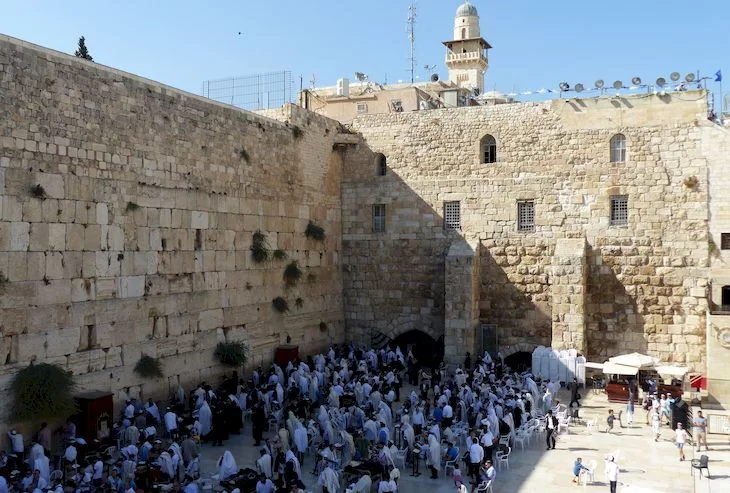As stated in the sacred Jewish writings, the “Western Wall” always has Divine presence. Therefore, requests made to the Almighty at this place usually hold special power and come true. Pilgrims have come here for centuries to pray, touch the holy site, and strengthen their faith. Regardless of religion, anyone can bring their cherished desires here, which will always be “heard” by the Lord. There are countless testimonies to this, and the plaza before the wall is constantly filled with people.
Visiting Rules for the Western Wall
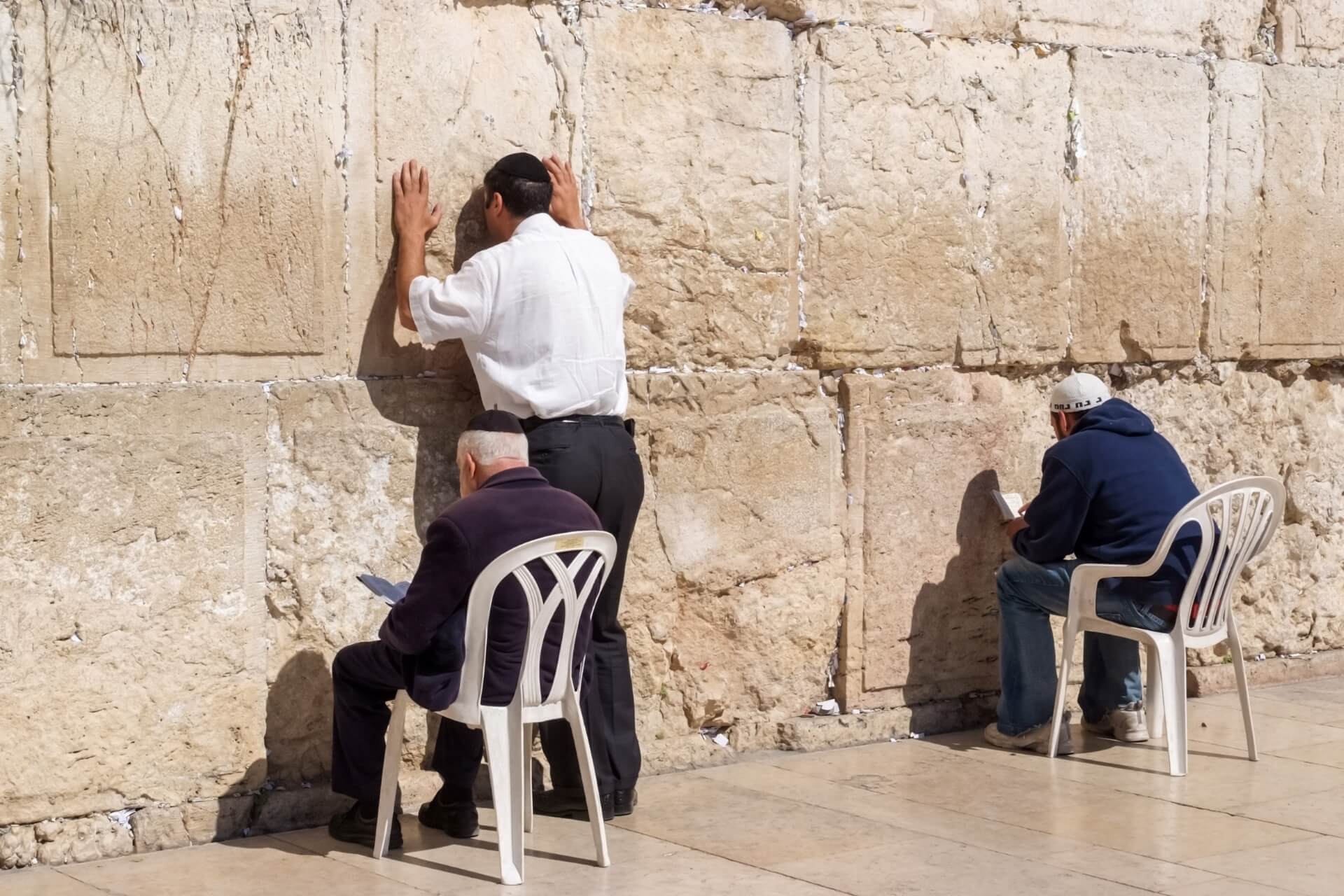
There are specific rules for visiting this miraculous place. Women must cover their shoulders and knees with clothing. They approach the wall separately from men, who must cover their heads, either with a kippah (a small Jewish cap) or any other head covering. Watchmen ensure these customs are followed, offering necessary shawls or cardboard kippahs if needed. This service is free. For security purposes, visitors are checked with metal detectors, so don’t be surprised.
Notes with requests and cherished desires are inserted into the cracks between the stones. Amazingly, despite the abundance of notes, there is always room for each one. You must not remove others’ notes or turn your back to the wall; you should walk away facing it. After this, it is recommended to donate some money to charity. The notes are periodically collected by the staff and undergo a specific ritual on the Mount of Olives. They are hidden in a “genizah,” a repository for texts mentioning the Creator’s name, which is considered a more honorable way of disposing of paper letters, although burning them is a cleaner method.
How to Write a Note Correctly
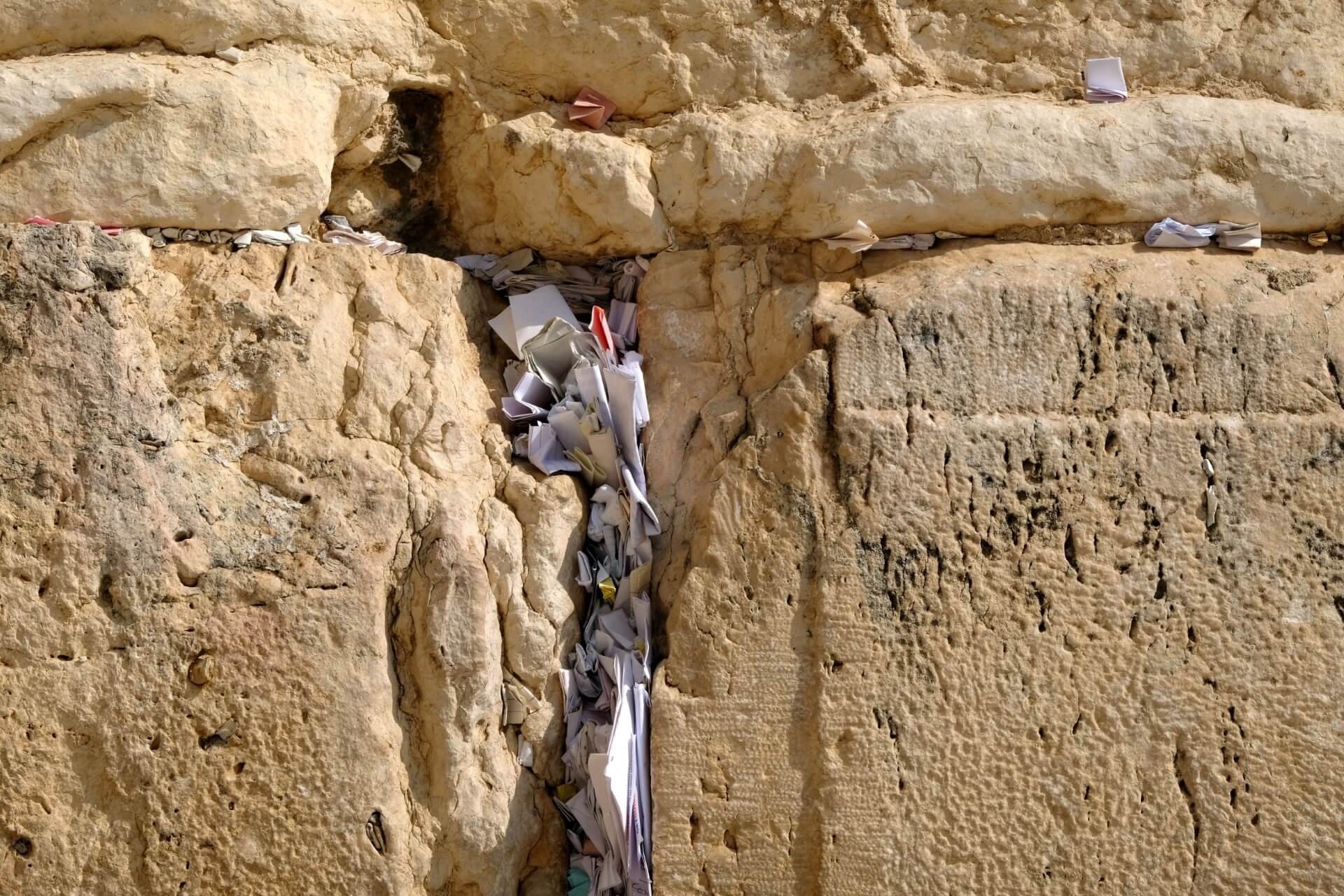
When creating such a message, prayer to God happens. Leave all negative emotions, resentment, and anger for later, and ask the Lord for what you want with love and joy. Think positively, avoiding the word “no.” It’s good if the text includes your name, only kind wishes, and gratitude for what you have.
Everything else—language, quality of paper, ink, size of the letter, etc.—does not matter as long as it comes from the heart. Do not ask for something to be multiplied, as it might backfire. If you have enough money for the essentials, are not starving, don’t ask for more. The note should contain your deepest desires, what you truly want and lack. You can ask for the resolution of a difficult situation or problem you couldn’t solve on your own. It’s said that after placing the note in the Wall, you will immediately feel relief and peace.
Many people have visited this place with their desires. Nationality, social status, or popularity in society does not matter. Notes are neither superstition nor a sign of ignorance. For many who are not used to praying for various reasons, this note will express their religious feelings. In achieving any dreams, all kinds of support are essential, and this note can provide the strongest help imaginable. It’s important not to stop on your path to the goal, doing everything necessary and possible.
Online Note to the Western Wall
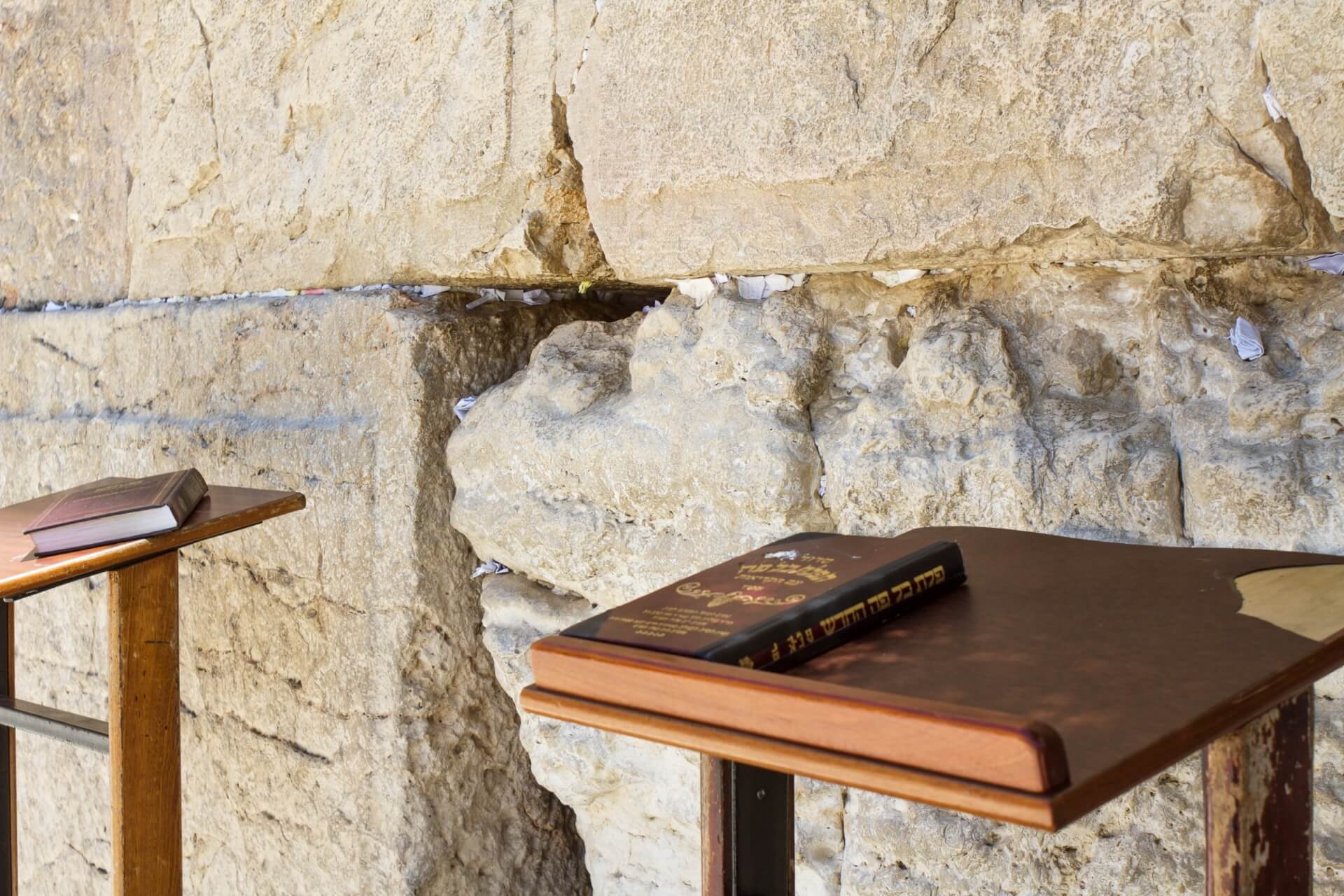
If someone cannot bring their message in person, others can do it for them. The power of prayer remains unchanged, and the request will still be heard. The Chief Rabbi of the synagogue in the Jewish Quarter, Rabbi Shmuel Rabinowitz, receives thousands of letters addressed “to Jerusalem, to the Almighty.” He places all of them in the Wall without exception. With the advent of the internet, delivering notes has become much easier. Websites serviced by volunteers print the requests of those who contact them and take them to the Wall.
History
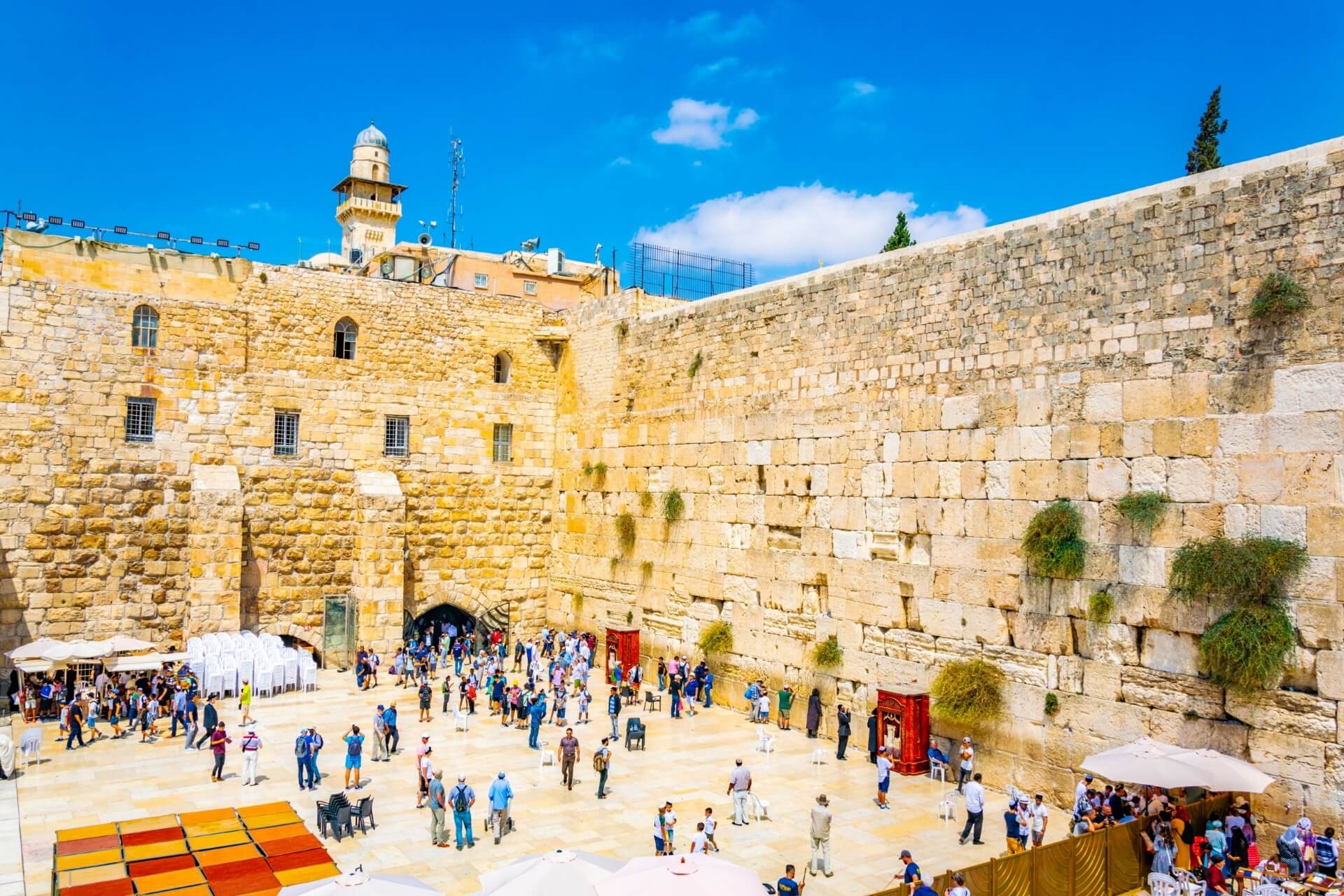
Of course, it’s better to visit Jerusalem in person, the great creator of world history, and feel the spiritual thrill of being near the birthplace of three religions. The Western Wall is a remnant of the fortification of the mount where Solomon’s Temple was built in the 10th century BCE. Later, King Herod built the Second Temple on the site of the one destroyed by the Babylonians. This construction was truly grandiose.
The work lasted about ten years, but this building was also destroyed by Roman conquerors in 70 CE. Even the Temple Mount was razed and plowed over. The Western Wall is the only thing that survived. For many centuries, it has been considered a symbol of faith and hope for generations of Jews.
The tradition of placing notes in the cracks has a history of at least 300 years. The first mentions appeared when the Jewish sage Rabbi Chaim ben Attar advised people to do this. These stories of fulfilled desires are detailed in Rebbe Munkacher’s book from the early 18th century.
Before this, pilgrims would write their names in Hebrew on the stones, drive nails, chip off pieces of masonry, and collect sand to keep a part of the holy site. But the rabbis prohibited this, as over the years, it could lead to losing the relic. Nowadays, to see the plaza before the Western Wall, you can visit a website with a round-the-clock webcam. Such “visits” to holy places differ from personal presence. In any case, true communication with God happens in prayer from the heart.

